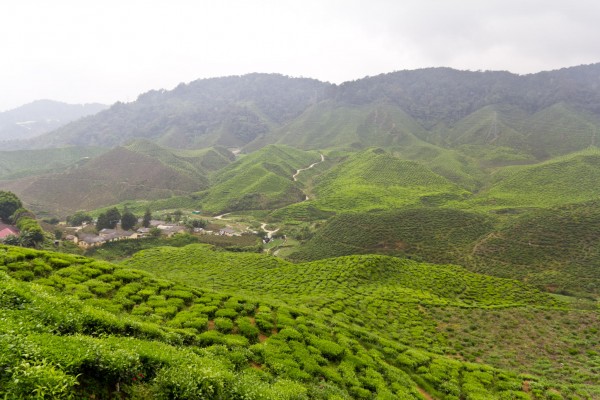
Tea Plantation by Hakeem IbnFaisal (via 500px)
How Growth Conditions Affect the Taste of Your Tea
Tea dates back as far as 2737 BC, when legend claims it was discovered in China. Today, tea is grown and consumed all around the world, but where it’s grown plays a crucial role in how the tea develops and tastes. This concept is known as terroir, the environmental conditions, particularly soil and climate, which influences the flavor and aroma of any given food or beverage. There’s a lot that goes into tea terroir, but let’s start off with the basics!
Terroir is a French term that comes from the word terre, meaning earth, originally developed by the French wine industry to describe the impact that a growing location has on the final flavor. The French saying “goût de terroir” refers to the taste of a place where the food or drink is produced. Sun, soil, rain, fog, and temperature can all influence the taste of the finished product. Terroir creates a unique flavor, derived from a unique place. Terroir is most frequently discussed when it comes to wine. Consumers want to know where their wine came from, and what year it was produced. This concept is also frequently applied to tea, coffee, and chocolate, as well as other foods. The terroir of each territory varies, producing different qualities in tea plants around the world.
There are so many influencers on the environment that play a role in how a tea will taste. A mountain covered in flowers is going to impart floral elements into the tea, simply by the absorption of the aroma in the air over time. An abundance of sunlight will tend to result in stronger and potentially bitterer teas. Higher elevation creates sweeter teas, because of the cooler temperatures. These environmental factors can often be out of human control, which means each harvest of tea can vary from the previous.
Boston Teawrights ships tea leaves from the heart of Nantou, Taiwan. They come from a family run garden, high in the mountains, and it’s in this high altitude where the leaves gain their flavor. Also known as “Tea County,” Nantou County is a tea-producing region in central Taiwan. The Lugu Township area of Nantou produces oolong. The medium-altitude hilly plateaus produce less floral teas than the nearby higher elevations, but their diverse range of tea products (such as dark roast oolong, red oolong and Royal Courtesan oolong) sets them apart from other growing regions. Shan Lin Xi is another part of Nantou County, famous for its light, floral oolong, which are grown at higher elevations. In the lower elevations of Nantou County, there is Sun Moon Lake, an area known for its black teas. Terroir consists of all of the natural elements that go into the tea before it undergoes any human intervention. There is so much to be learned about the influence of tea terroir, but the most important thing to note is that it is what allows us to experience and enjoy a variety of different teas from around the world!
Discuss this post on our subreddit
Experience the Effects
If the effect of terroir on tea’s flavor interests you, then you’ll love exploring how it’s craft effects flavor too. Try it yourself, we’ll supply the fresh leaves. Click here to start
[related-posts]
